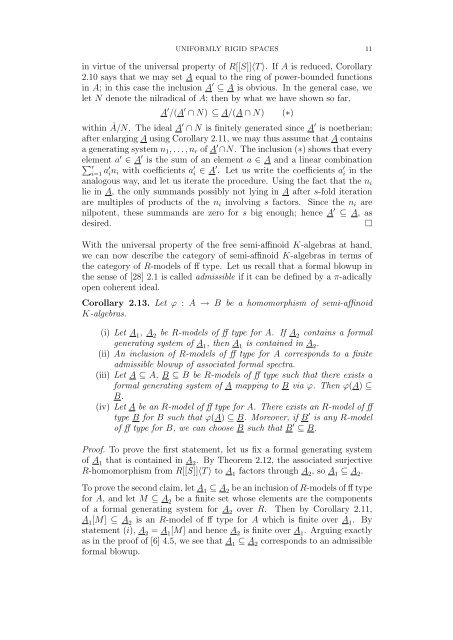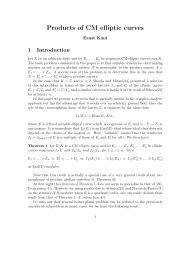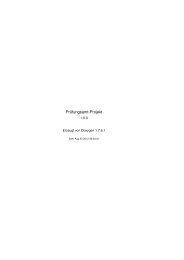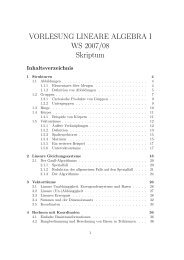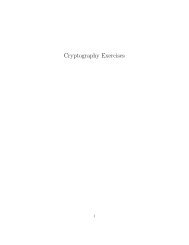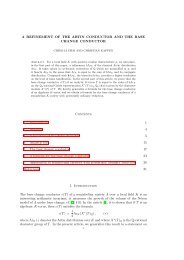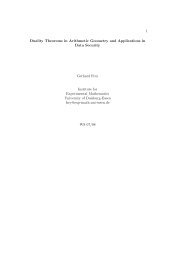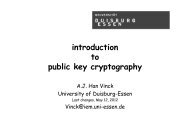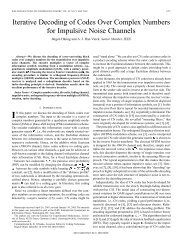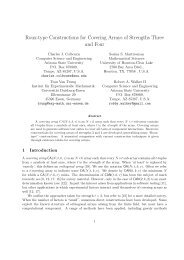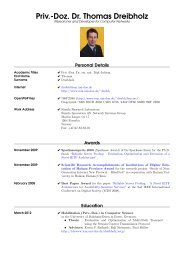UNIFORMLY RIGID SPACES 1. Introduction Let K be a non ...
UNIFORMLY RIGID SPACES 1. Introduction Let K be a non ...
UNIFORMLY RIGID SPACES 1. Introduction Let K be a non ...
Create successful ePaper yourself
Turn your PDF publications into a flip-book with our unique Google optimized e-Paper software.
<strong>UNIFORMLY</strong> <strong>RIGID</strong> <strong>SPACES</strong> 11in virtue of the universal property of R[[S]]〈T 〉. If A is reduced, Corollary2.10 says that we may set A equal to the ring of power-bounded functionsin A; in this case the inclusion A ′ ⊆ A is obvious. In the general case, welet N denote the nilradical of A; then by what we have shown so far,A ′ /(A ′ ∩ N) ⊆ A/(A ∩ N)within Å/N. The ideal A′ ∩ N is finitely generated since A ′ is noetherian;after enlarging A using Corollary 2.11, we may thus assume that A containsa generating system n 1 , . . . , n r of A ′ ∩N. The inclusion (∗) shows that everyelement a ′ ∈ A ′ is the sum of an element a ∈ A and a linear combination∑ ri=1 a′ in i with coefficients a ′ i ∈ A ′ . <strong>Let</strong> us write the coefficients a ′ i in theanalogous way, and let us iterate the procedure. Using the fact that the n ilie in A, the only summands possibly not lying in A after s-fold iterationare multiples of products of the n i involving s factors. Since the n i arenilpotent, these summands are zero for s big enough; hence A ′ ⊆ A, asdesired.□With the universal property of the free semi-affinoid K-algebras at hand,we can now descri<strong>be</strong> the category of semi-affinoid K-algebras in terms ofthe category of R-models of ff type. <strong>Let</strong> us recall that a formal blowup inthe sense of [28] 2.1 is called admissible if it can <strong>be</strong> defined by a π-adicallyopen coherent ideal.Corollary 2.13. <strong>Let</strong> ϕ : A → B <strong>be</strong> a homomorphism of semi-affinoidK-algebras.(i) <strong>Let</strong> A 1 , A 2 <strong>be</strong> R-models of ff type for A. If A 2 contains a formalgenerating system of A 1 , then A 1 is contained in A 2 .(ii) An inclusion of R-models of ff type for A corresponds to a finiteadmissible blowup of associated formal spectra.(iii) <strong>Let</strong> A ⊆ A, B ⊆ B <strong>be</strong> R-models of ff type such that there exists aformal generating system of A mapping to B via ϕ. Then ϕ(A) ⊆B.(iv) <strong>Let</strong> A <strong>be</strong> an R-model of ff type for A. There exists an R-model of fftype B for B such that ϕ(A) ⊆ B. Moreover, if B ′ is any R-modelof ff type for B, we can choose B such that B ′ ⊆ B.Proof. To prove the first statement, let us fix a formal generating systemof A 1 that is contained in A 2 . By Theorem 2.12, the associated surjectiveR-homomorphism from R[[S]]〈T 〉 to A 1 factors through A 2 , so A 1 ⊆ A 2 .To prove the second claim, let A 1 ⊆ A 2 <strong>be</strong> an inclusion of R-models of ff typefor A, and let M ⊆ A 2 <strong>be</strong> a finite set whose elements are the componentsof a formal generating system for A 2 over R. Then by Corollary 2.11,A 1 [M] ⊆ A 2 is an R-model of ff type for A which is finite over A 1 . Bystatement (i), A 2 = A 1 [M] and hence A 2 is finite over A 1 . Arguing exactlyas in the proof of [6] 4.5, we see that A 1 ⊆ A 2 corresponds to an admissibleformal blowup.(∗)


